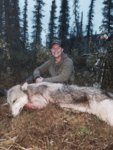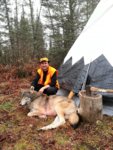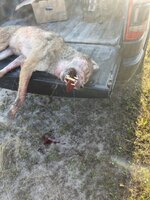Beendare
WKR
Given 2 scenarios; one being a rifle hunt in the fall season [before snow].....and the other being winter conditions....what strategies can a guy use to kill a wolf?
It seems to me setting up on a good observation point covering one of their travel routes in early season would be a decent strategy especially early AM and right up to dark.
Calling, Howling?
Has anyone tried dragging a deer leg or scent drag type of thing?
I'm a bowhunter and the only guys I know that have shot a wolf with a bow did it off of a moose carcass.
Late season it seems like guys use snow machines to cover a lot of ground.
Let er rip on effective strategies for a guy to kill a wolf with a rifle.....
It seems to me setting up on a good observation point covering one of their travel routes in early season would be a decent strategy especially early AM and right up to dark.
Calling, Howling?
Has anyone tried dragging a deer leg or scent drag type of thing?
I'm a bowhunter and the only guys I know that have shot a wolf with a bow did it off of a moose carcass.
Late season it seems like guys use snow machines to cover a lot of ground.
Let er rip on effective strategies for a guy to kill a wolf with a rifle.....






